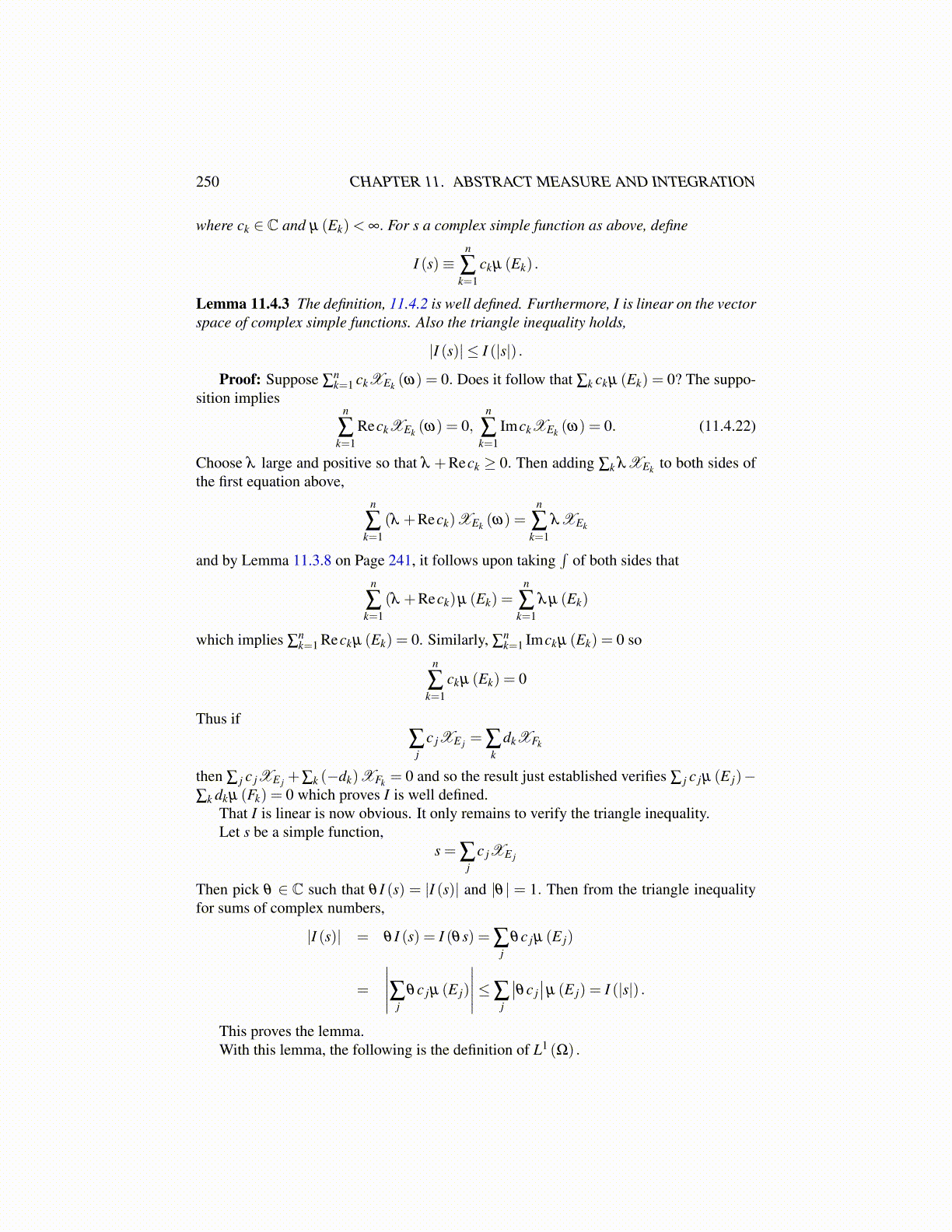
250 CHAPTER 11. ABSTRACT MEASURE AND INTEGRATION
where ck ∈ C and µ (Ek)< ∞. For s a complex simple function as above, define
I (s)≡n
∑k=1
ckµ (Ek) .
Lemma 11.4.3 The definition, 11.4.2 is well defined. Furthermore, I is linear on the vectorspace of complex simple functions. Also the triangle inequality holds,
|I (s)| ≤ I (|s|) .
Proof: Suppose ∑nk=1 ckXEk (ω) = 0. Does it follow that ∑k ckµ (Ek) = 0? The suppo-
sition impliesn
∑k=1
ReckXEk (ω) = 0,n
∑k=1
ImckXEk (ω) = 0. (11.4.22)
Choose λ large and positive so that λ +Reck ≥ 0. Then adding ∑k λXEk to both sides ofthe first equation above,
n
∑k=1
(λ +Reck)XEk (ω) =n
∑k=1
λXEk
and by Lemma 11.3.8 on Page 241, it follows upon taking∫
of both sides thatn
∑k=1
(λ +Reck)µ (Ek) =n
∑k=1
λ µ (Ek)
which implies ∑nk=1 Reckµ (Ek) = 0. Similarly, ∑
nk=1 Imckµ (Ek) = 0 so
n
∑k=1
ckµ (Ek) = 0
Thus if∑
jc jXE j = ∑
kdkXFk
then ∑ j c jXE j +∑k (−dk)XFk = 0 and so the result just established verifies ∑ j c jµ (E j)−∑k dkµ (Fk) = 0 which proves I is well defined.
That I is linear is now obvious. It only remains to verify the triangle inequality.Let s be a simple function,
s = ∑j
c jXE j
Then pick θ ∈ C such that θ I (s) = |I (s)| and |θ | = 1. Then from the triangle inequalityfor sums of complex numbers,
|I (s)| = θ I (s) = I (θs) = ∑j
θc jµ (E j)
=
∣∣∣∣∣∑jθc jµ (E j)
∣∣∣∣∣≤∑j
∣∣θc j∣∣µ (E j) = I (|s|) .
This proves the lemma.With this lemma, the following is the definition of L1 (Ω) .